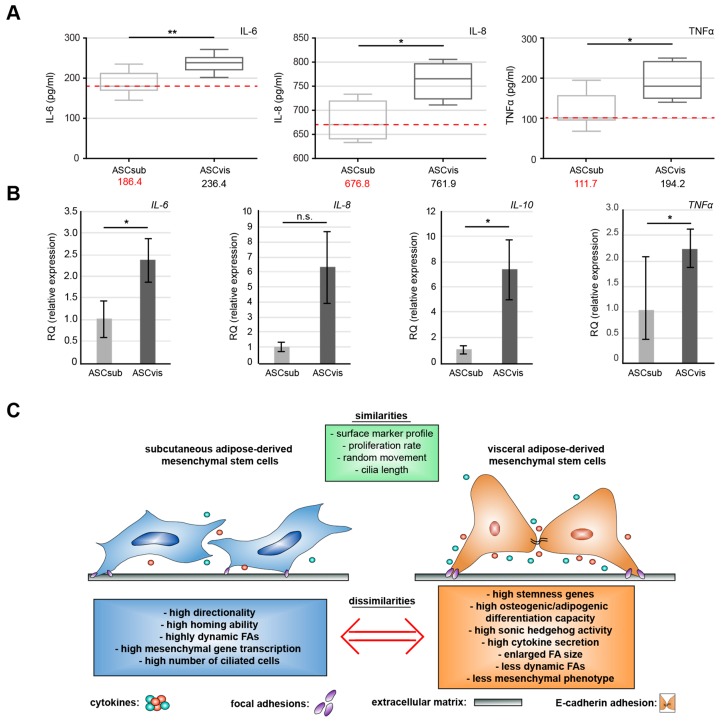Figure 7.
Visceral ASCs secrete more pro-inflammatory cytokines. (A) The supernatants of subcutaneous and visceral ASCs in the third passage were collected after 72 h culture and used for evaluation of IL-6 (left), IL-8 (middle) and TNF-α (right) by enzyme-linked immunosorbent assay (ELISA). The results are from four experiments and presented as median ± min/max whiskers in box plots. Student’s t test, ∗ p < 0.05, ** p < 0.01. (B) The gene levels of IL-6, IL-8, IL-10, and TNFα. The data are based on three experiments and presented as RQ with minimum and maximum range. Student’s t test, ∗ p < 0.05. (C) Schematic illustration of the proposed similarities and dissimilarities between both ASC subtypes. The key dissimilarities between subcutaneous and visceral ASCs are their migration mode, differentiation capacity, and cytokine secretion, which affect a variety of different pathways, like the Hh signaling on the primary cilium.

